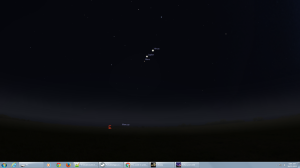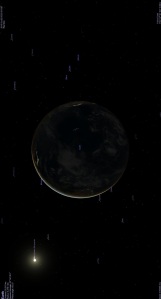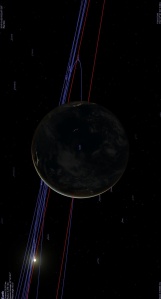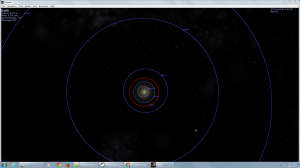Last night the sky over Washington, DC was unusually clear, so we had a spectacular view of three planets low in the pre-dawn east. Venus, Jupiter and Mars were all pointed toward the coming sunrise. It reminded me of one of the early geometry puzzles I sorted through while learning astronomy.
Venus orbits closer to the sun than we do. When we’re on the earth’s night side, it’s orbit is “behind” us. When we look up and out, we’re looking toward the orbits of the outer planets – Mars, Jupiter, Saturn, etc.
So it makes sense that we see the outer planets at night, when we face away from the sun; but how is it we can see them and the inner planet Venus *at the same time*?
If all the planets remained aligned and orbited in lockstep, then that would be an issue. But of course planets are at different parts of their orbits at different times, and this gives us windows when we can see them together.
My phone is most definitely not an astronomy camera. Please accept this simulated view from Stellarium, matching the exact time I saw it last night. The actual view was more impressive. Click on images to enlarge.
Celestia provides real-time simulated snapshots of our solar system. The view below is tilted sideways because you’re standing on a ball looking east. See the string of lights in the middle of the ocean? Hawaiian islands. Top center of Earth, the lights of the California coast. Look up, and what do you see? Same planets, same alignment.
Same image, with orbital paths added:
And an overhead view of the solar system at the same time:
.
..and that’s how you see three planets, one inner, two outer, together on cool fall night.



